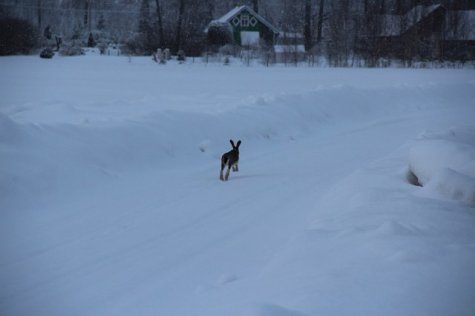Brown hares around
Photo Peep Käspre, Lääne-Virumaa
Translation: Liis
Brown hare
Brown hare; European hare Halljänes Lepus europaeus
In mid-winter brown hares start showing an interest in the fruit trees in our gardens. And no problems – a thin snow carpet, covering it a strong crust, and almost no freshly fallen snow.
From November brown hares have their winter coat with a great variety of colour shades, and it doesn’t provide any particular protection in snow. Brown hares are present in all Estonia only from the 18th century, in contrast to our ancient species the mountain or white hare that is a forest inhabitant, wears a white coat in winter and whose paws have fur-covered soles in winter.
Brown hares start moving at dusk in fields and meadows, where there are open spaces. In daytime they keep in hiding – they rely on their acute hearing and fast feet, but in spite of that the number of our hares has decreased significantly. We have discussed these things earlier. They are actually not very small animals – length about sixty centimetres, the tail stump ten centimetres and as average weight a little less than five kilos.
The mating period of fertile brown hares starts already in February, three or four males may then be running after a female, and fights between them are quite common until fur coats and ears are torn and faces scarred later.









